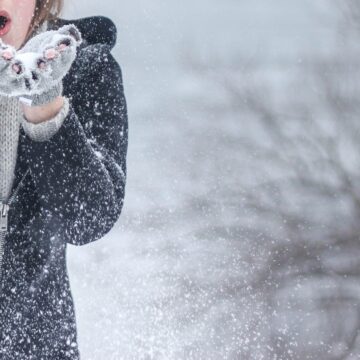
- Frostbite can cause severe skin damage.
- Dehydration can cause frostbite.
- Drinking alcohol in cold weather can increase your risk of frostbite.
Frostbite can affect anyone who spends time outdoors in the winter. Here are the signs and symptoms of frostbite that you should never ignore.
1. Red or sore skin

Frostbite causes the cheeks, nose, ears, chin, fingers, and toe to turn red; a condition called frostnip. It’s a signal to seek warm shelter. Frostnip might also cause the skin to feel very cold to touch.
2. Prickly feeling

If you don’t seek shelter once you experience frostnip, you will experience the early stages of frostbite, in which you feel numbness, itchiness, burning, or sting in your exposed skin. The numbness may make it hard to know that you’re experiencing frostbite, so it would help to pay attention to your skin’s color and texture.
3. Hard, waxy skin

With prolonged exposure, frostbite can lead to tissue damage that causes the skin to feel hard and look shiny or waxy. This stage, called superficial frostbite, is the intermediate stage of frostbite. Warming up during this stage can cause blisters to form. Seek immediate medical attention to prevent severe skin damage.
4. Warm up the right way

The moment you notice a sign of frostbite, seek warm shelter immediately. Cover the exposed area with a warm washcloth for about 30 minutes, or soak them in warm water. Your skin has likely gone numb, so have someone else check the water temperature if possible. As your skin starts to thaw and your blood flow is restored, it can cause your skin to turn red, and feel like it’s tingling.
5. Prevent frostbite

To prevent frostbite, dress warmly with loose layers of clothing. The first layer should keep you dry, the next layers should have materials that insulate, and the top layer should protect you from the wind and water. If you start sweating, unzip your coat a bit. Remember to use a cozy hat, earmuffs, insulated gloves, thick socks, and waterproof shoes.
6. Stay hydrated

According to Mayo Clinic, dehydration also increases the risk of frostbite. The American Academy of Dermatology recommends drinking water before heading outdoors for any activity, even if you’re not feeling thirsty. Avoid alcohol as it makes you dehydrated and can make your body lose heat more quickly, says Healthline. Eating before going out into the cold can also help keep your body warm.
7. Keep moving

If you’re staying outdoors for extended periods, keep your core warm by moving. You can do jumping jacks, or move your arms to get your blood flowing. But remember not to overdo it.
Source: Reader’s Digest
